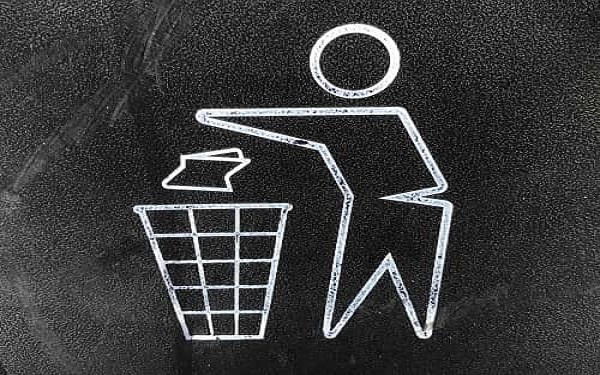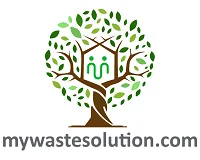The risks involved in handling hazardous waste
So, it was back on July 28, 1992. When Jerry Martin hired Cedric Jackson, a concrete finisher. Since he had to remove two 10,000 gallon tanks from his automobile shop. The problem here was not because Martin hired Jackson. It was due to Jackson having no work experience on underground storage tanks. He took the job just to earn some extra money to look after his family. That consists of his wife and four children.
Anyway, Jackson agreed to work at $5 per hour. But a sad incident occurred. Either he tumbled or flung between the two tanks. That might be because he didn’t see the tanks rolling towards him. This resulted in causing fire. The rescue teams had to spend more than five hours to secure the tanks. And to remove Jackson’s body from the muddy, fuel-infected tank hole. That was underneath the concrete anchor.
This might not have taken place. Only if Martin took the advice. The Florida Department of Environmental Regulation had advised him to contact a pollution contractor. They are experts in removing and dismantling all these. But, he did not heed the advice in seeking the specialist. As a result, it cost someone’s life, and had to pay a fine as well. This reminds us to follow the safety protocols. Especially, when handling hazardous waste, or you can face severe consequences. For efficient handling and treatment of hazardous waste, connect with our hazardous waste experts!
This is only one case that occurred while handling hazardous waste. Just in case you are not aware then there are several!
I have mentioned the list below to give you the details.
The hazards encountered and the Preventive Measures
Chemical Exposure
Humans can be exposed to chemical hazardous waste in four different ways:
Inhalation
The primary function of our respiratory system is to deliver oxygen into the bloodstream. That is then distributed to the vital organs. Similarly, when you breathe in toxic chemicals gas, it will be distributed.
Worst part is sometimes you might not even realize it. That is because your senses may not detect some hazardous chemicals. They may be odorless, tasteless, colorless, or non-irritating. Moreover, you might not feel the symptoms immediately.
Therefore, inhaling toxic gas is the greatest concern when handling hazardous waste. So, putting on a mask is mandatory when handling hazardous waste.
Dermal Absorption
Absorbing hazardous chemicals through the skin or eyes is another common way. From which you can take in the toxins inside your body. The chances increase by wounds, heat, or moisture. These toxic chemicals can injure your skin as well. In addition, pass through your skin to transfer it to your vulnerable organs.
These chemicals can be a form of dust/smoke, liquids, gases, and vapors. As a result, PPE such as gloves, goggles, and bodysuit/coveralls is a must. This will help you prevent skin, eyes, or body. Also, save you from being exposed to toxic waste. In addition, avoid using contact lenses in the polluted zone.
Better avoid touching your eyes and face with your hands. Try minimizing skin contact with such chemicals.
Ingestion
This is the way where you take in the toxic chemicals with your mouth. Most of the time it occurs when you inhale dust, particles, and mists through your mouth. Along with it comes your habits. That is if you are into smoking, or chewing gum/tobacco.
It can occur while eating/drinking in a polluted environment as well. Better wash your hands and mouth before doing so.
You can prevent this by following good hygiene practices. Prohibit eating, drinking or smoking in the polluted zone. Last but not least, wear a dust mask while handling such waste.
Injection
Injection happens by accident if you step on sharp infected waste. For instance broken glass. It can also be through misuse of syringe needles or having contact with sharp objects. You can prevent this by using safety footwear, gloves, and protection gear. Be more careful when handling sharp waste.
Explosion and Fire
Potential reasons for causing explosions and fire while handling hazardous waste are as follows:
- Ignition of explosive or flammable chemicals
- Ignition of materials due to oxygen enrichment
- Agitation of shock-or friction-sensitive compounds
- A sudden release of material under pressure
You must be well aware of how hazardous waste can ignite or explode. This usually happens when you accidentally mix chemicals that were not supposed to be. Sometimes, it may be due to exposure of the waste to a temperature of a high degree. It can also be when it is exposed to fire.
However, you should always keep in mind that it can result in the following ways:
- Pose a threat because of the heat it releases
- Cause a big flame
- Generate toxic smoke
- Produce destructive shock waves
- Throw objects in the air that one doesn’t know where it might land
- Spread corrosive chemicals in the environment
If such an incident takes place then it is a high threat to the workers handling the waste. Also, to the environment along with the people around. This can be prevented by strictly monitoring hazardous waste. That is, have a good knowledge about which types of hazardous waste can cause explosions. Also, how they should be stored. Moreover, keeping away potential ignition sources from flammable or explosive environments. Connect with our chemical waste consultants here!
Additionally, while handling such waste the handler should wear explosion-proof gear. For more precautions avoid practices that might result in igniting the waste.
Oxygen Deficiency
The air in Earth’s atmosphere consists of only 21%. And according to Argon, if the oxygen level goes down to 10% or less humans may experience issues such as:
- Loss of the ability to move
- Loss of consciousness
- Cause a life
The same report also says, if the oxygen level goes down to 16%, humans are likely to experience the following:
- Increased pulse rate
- More rapid breathing
- Compromised thought processes
- Reduced attention span
- Impaired coordination
Same thing can occur while handling hazardous waste due to oxygen deficiency. This takes place usually when:
- Another gas replaces the oxygen in the site
- The chemical or biologic reaction consumes the oxygen
Moreover, it can also occur when the waste storing site is in high altitudes, low-lying areas, or confined. Therefore oxygen level should be always monitored in that particular area. Moreover, train every worker on how to use a respirator. Educate on how to wear atmosphere-supplying respirators.
Biological Hazards
As mentioned in my previous blog “Which type of Biomedical Waste is Hazardous and Non-hazardous?” There are several biomedical wastes that are hazardous. And it can turn out to be fatal if mishandled. In addition, biological hazards consist of waste such as:
- Poisonous plants
- Animals
- Reptiles
- Insects
- Indigenous pathogens
So, to handle such waste protective clothing and breathing equipment is a must. This is to help mitigate the threat.
If your body gets exposed to this particular waste then wash it off using a disinfectant solution.
Bloodborne Pathogens
Contaminated needles and other sharp objects pose a serious risk while handling such waste. According to the National Institutes of Occupational Safety and Health (NIOSH); an estimated 600,000 to 800,000 such incidents occur per year in the US.
That is an average of 1 in every 10 secs. This mostly involves workers in the hospitals. That includes nurses, laboratory staff, physicians, housekeepers, and other health care workers.
Note: Such incidents may lead to HBV or HIV- The virus that causes AIDS. Resulting in AIDS is low. But for HBV about 8700 cases arise each year. As per OSHA, 200 workers die each year due to occupational exposure to bloodborne pathogens.
To prevent this, provide the workers that have a chance of exposing themselves with:
- Written Exposure Control Plan
- Engineering and work practice controls
- Hepatitis B vaccinations
- Protective clothing and equipment
- Training from an experienced person
Moreover, the workers should dispose of the contaminated sharps in the specific container assigned for such waste.
Electrical Hazards
Though not directly related to handling hazardous waste, electrical hazards do pose a severe risk. Especially in waste sites where hazardous waste is stored or dumped. The risks created are mainly because of overhead power lines, downed electrical wires, and buried cables. Moreover, electrical equipment used on-site may also pose a threat.
To prevent electrical hazards there are several solutions. That includes the use of insulation, guarding, grounding, electrical protective devices, and safe work practices.
Another hazard that people often overlook is the thunderstorm which can cause lightning hazards. Therefore, weather conditions should be monitored while working on sites to lessen the risk.
Moreover, the capacitors that are available on sites may retain charge. So it is recommended to ground those before handling. In addition, removing underground storage tanks usually involves electrical cable. So implement electrical hazard safety procedures.
Heat Stress
This is another major issue for the workers handling hazardous waste. To protect themselves from exposure to waste, they need to be fully protected wearing PPE. This serves as a shield however, it can also develop heat stress rapidly. This factor also depends mostly on the atmosphere and working conditions too.
Nonetheless, it is as risky as it is with chemical exposure. Heat stress can make you uneasy. It may cause cramps and rashes. It may further result in impaired functional ability.
At the same time if you avoid the protection gear then it may cause you harm. So, the solution to this is to provide careful training. Above that monitor the person wearing those gear. Additionally, there should be ventilation if the working site is a covered workplace. Maintain the working hours and rest periods. Train the workers so that they realize if any symptoms of heat stress arise.
Cold Exposure
Similar to heat stress, cold exposure is risky for a worker. A cold injury such as frostbite can occur because of cold exposure. And this takes place due to low temperature. You are pretty aware if the temperature falls the wind chill increases.
So, to prevent this, provide workers with appropriate clothes. To shield from the wind and keep themselves warm. Similar to the preventive measures of heat stress- monitor working hours and rest periods. Maintain health and physical conditions at the same time.
Noise Hazard
Since most of the work sites handling hazardous waste use machinery and equipment there are high chances of noise hazard. This can harm the workers in several ways such as causing damage to the ear. Moreover, they might even end up losing hearing ability forever.
Furthermore, there might be communication problems as well. This might result in creating grievous situations. For instance, a worker might end up getting hurt because of not hearing the warning shout from fellow workers.
To prevent this, monitor the noise scale. If it’s something that you can’t control then the workers should maintain the work hours as mentioned above.
Conclusion
There are several other hazards while handling hazardous waste. For example, falling from heights or getting injured because of mishandling the tools. So to prevent all this, the concerned management makes sure to train the team/department. Educate the workers with the steps and procedures so that no one gets hurt.
Yes, not managing hazardous waste will bring disaster to the environment. But waste handlers’ safety should be a major concern as well. I hope this blog helps you in taking precautions for handling hazardous waste. Our waste management consultants can help you meet all your waste management needs!




















